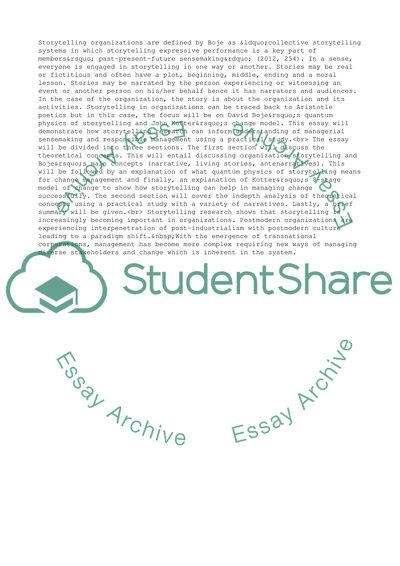Cite this document
(The Concept of Change Management Essay Example | Topics and Well Written Essays - 2750 words, n.d.)
The Concept of Change Management Essay Example | Topics and Well Written Essays - 2750 words. Retrieved from https://studentshare.org/management/1690348-using-a-practical-study-working-with-a-variety-of-narratives-demonstrate-how-storytelling-research-can-inform-your-understanding-of-managerial-sense-making-and-responsible-management
The Concept of Change Management Essay Example | Topics and Well Written Essays - 2750 words. Retrieved from https://studentshare.org/management/1690348-using-a-practical-study-working-with-a-variety-of-narratives-demonstrate-how-storytelling-research-can-inform-your-understanding-of-managerial-sense-making-and-responsible-management
(The Concept of Change Management Essay Example | Topics and Well Written Essays - 2750 Words)
The Concept of Change Management Essay Example | Topics and Well Written Essays - 2750 Words. https://studentshare.org/management/1690348-using-a-practical-study-working-with-a-variety-of-narratives-demonstrate-how-storytelling-research-can-inform-your-understanding-of-managerial-sense-making-and-responsible-management.
The Concept of Change Management Essay Example | Topics and Well Written Essays - 2750 Words. https://studentshare.org/management/1690348-using-a-practical-study-working-with-a-variety-of-narratives-demonstrate-how-storytelling-research-can-inform-your-understanding-of-managerial-sense-making-and-responsible-management.
“The Concept of Change Management Essay Example | Topics and Well Written Essays - 2750 Words”, n.d. https://studentshare.org/management/1690348-using-a-practical-study-working-with-a-variety-of-narratives-demonstrate-how-storytelling-research-can-inform-your-understanding-of-managerial-sense-making-and-responsible-management.


